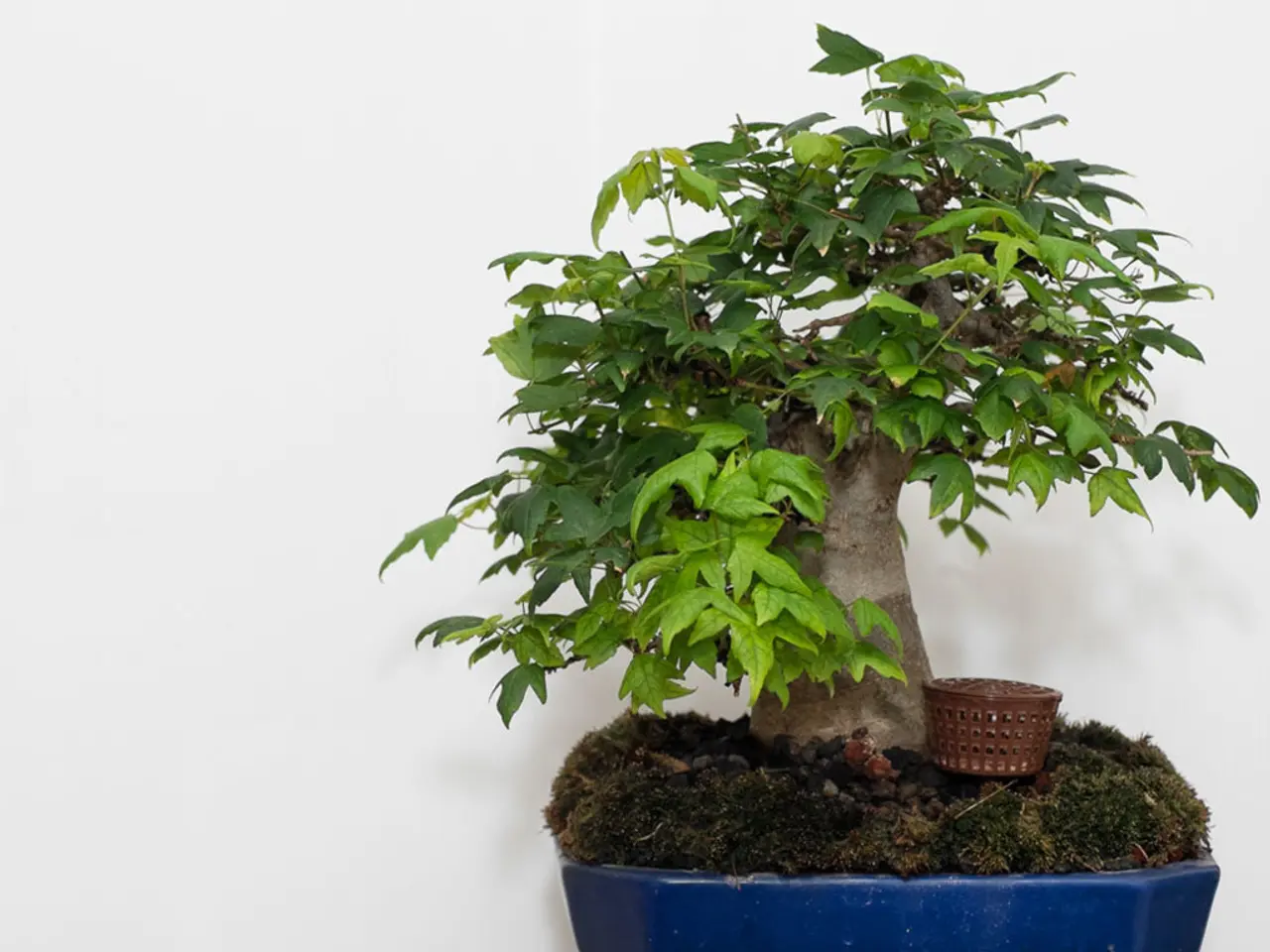Guide for Nurturing Jade Bonsai Plants
Jade bonsai, with their vibrant green leaves and attractive shape, make an excellent addition to any indoor space or mild climate. To ensure a healthy and attractive jade bonsai, it's essential to understand the specific care requirements for temperature, lighting, watering, fertilizing, repotting, and pest control.
Firstly, jade plants thrive in moderate temperatures and are not cold-tolerant. Ideal indoor temperatures range around typical room temperature, avoiding drafts and heating vents that cause extreme changes. They do not tolerate temperatures below about 30°F (-1°C), so keep them indoors in colder climates.
Secondly, jade plants require at least six hours of bright indirect sunlight daily. A south- or west-facing window is best, but avoid harsh direct sunlight that can burn or shrivel leaves. Insufficient light leads to leggy, sparse growth.
Watering is crucial for jade bonsai. Use the "soak and dry" method common to succulents. Frequent watering in spring and summer keeps the soil moist but never soggy, while in winter, reduce watering to about once per month, allowing the soil to dry out between waterings.
Fertilizing is another essential aspect of jade bonsai care. Feed with a balanced fertilizer such as a 20-20-20 formula every 2 to 4 weeks during the growing season (spring and summer) to promote healthy, robust growth. Avoid over-fertilizing, which can stress the plant and cause leaf discoloration.
Repotting every 2-3 years helps refresh the soil and allow root growth. Use loose, well-draining soil, preferably a succulent or cactus-specific mix with sand, perlite, or pumice. Terracotta or clay pots are ideal for good moisture absorption. Repotting is best done in spring before the growing season starts.
Pest control is crucial in maintaining a healthy jade bonsai. Jade plants can attract pests like mealybugs, spider mites, scale, and fungus gnats. Regularly inspect leaves and stems, and treat infestations early with insecticidal soap or neem oil.
Soil pH should be neutral to slightly acidic (around 5.5 to 7). Red leaf discoloration can occur due to stress from too much sun, watering issues, or temperature fluctuations.
With the right care, jade bonsai can live for several decades. Different methods for propagating jade bonsai include stem cuttings and leaf cuttings. Propagated jade bonsai should be kept in a warm place out of direct sunlight until it establishes itself in its new potting mix.
When wiring, avoid tight bends and cutting off the existing wire when re-wiring to prevent damage to the tree. Wiring and positioning the branches is used to shape the jade bonsai, using copper or aluminum wire.
The Bonsai World platform aims to equip users with everything needed to grow and maintain a beautiful bonsai tree. Choosing a suitable jade plant for bonsai involves assessing the shape, size, and health of the plant. Jade bonsai should be displayed close to a source of natural light and cared for with regular watering, temperature control, and lighting.
To get rid of pests, use a cotton swab dipped in alcohol to wipe down affected areas. Leaf cuttings involve laying leaves flat on moist soil, with the base inserted slightly into the soil, and roots will develop over time.
Jade bonsai trees can take anywhere from three to ten years or more to grow into mature and beautiful bonsai trees. With patience and dedication, you can cultivate a stunning jade bonsai that will bring beauty and tranquility to your indoor space or garden.
Maintaining a jade bonsai becomes an integral part of your home-and-garden lifestyle, as it thrives with proper care and attention. Bonsai training, specifically wiring and positioning the branches, is used to shape the jade bonsai and can be approached as a unique aspect of gardening.




